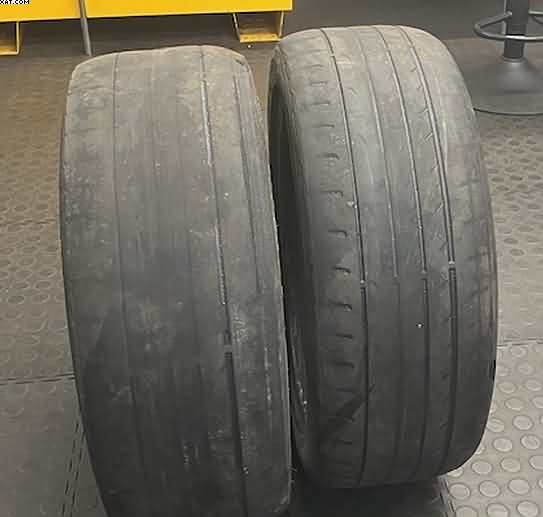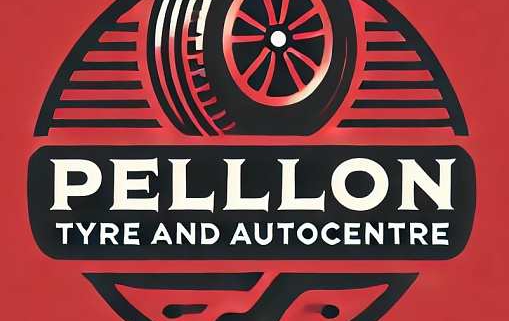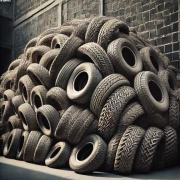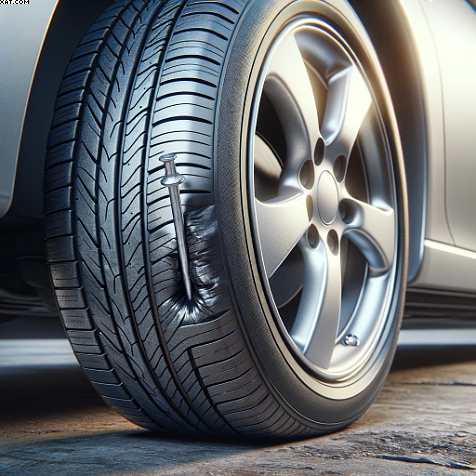Seat Ibiza With Premature Tyre Wear
Table of Contents
Seat Ibiza With premature Tyre Wear

Seat Ibiza With premature Tyre Wear
Premature tyre wear and steering rack issues are frequent issues at Pellon Tyres.
We frequently observe vehicles with odd tyre wear patterns at Pellon Tyres in Halifax. It’s a clear sign of underlying issues, and it’s always beneficial to investigate further. A Seat Ibiza with extremely worn tyres was the subject of one recent case. You might initially think, “Oh, just another set of worn-out tyres,” but we checked it thoroughly, as we always do. What we discovered was a perfect illustration of how issues with other parts of the vehicle might result in early tyre wear.
The Offender: A Poorly Maintained Steering Rack – Seat Ibiza With premature Tyre Wear
In this case, the steering rack of the Ibiza was in bad shape. The rack, which basically serves as a link between the tyres and the steering wheel, was severely worn and had become overly loose. Various alignment problems can result from this type of wear. The tyres were scuffing the road at the incorrect angles because the car’s wheels were not seating straight. Uneven and early tyre wear is the outcome.
The owner came to us believing that a simple tyre change was necessary after noticing that the tyres were wearing down quickly. But by locating the damaged steering rack, we were able to fix the underlying issue in addition to replacing the tires. For this reason, if your tyres aren’t holding up as well as they should, it’s always worthwhile to have your car evaluated.
Additional Typical Reasons for Early Tyre Wear- Seat Ibiza With premature Tyre Wear
Uneven tyre wear can be caused by more than just steering racks. There are many more offenders in our Halifax garage; therefore, it’s important to be aware of what to watch out for:
1. Wheels that are misaligned
One of the most frequent reasons for tyre issues is wheel alignment. The tyres may wear unevenly or excessively on one edge if the wheels on your car are not properly aligned. A car’s alignment can frequently be thrown off balance by Halifax’s narrow curves and uneven roads, particularly if you run into a pothole or clip a kerb.
2. Suspension Components That Are Worn
In order to keep your tyres firmly on the road, your suspension is essential. Uneven tyre wear may result from worn-out parts such as ball joints, struts or shocks. Additionally, a car with worn suspension may seem less stable or bouncy, particularly when cornering.
3. Pressures in the tyres
This one is straightforward but frequently disregarded. Whereas underinflated tyres wear on the edges, overinflated tyres wear down in the middle. In the long run, checking your tyre pressure on a regular basis can save you a lot of money. If you’re nearby, we usually advise stopping by Pellon Tyres for a fast pressure check.
4. Wheel Bearing Problems
Uneven wear may result from the wheel wobbling due to a loud or worn wheel bearing. At the garage, we’ve seen this quite a few times, and if you catch it early, you can save more expensive repairs.
5. Problems with Braking
Uneven tyre wear may also result from your car’s brakes sticking or dragging to one side. We look for this during routine maintenance because it can easily turn into a safety concern.
Local roads may exacerbate the situation. Seat Ibiza With premature Tyre Wear
As residents of Halifax, we are aware of how difficult the local roads can be. Steep hills, sharp turns, and the rare badly maintained road can all place additional strain on an automobile’s suspension and steering. It’s no surprise that so many cars have uneven tyre wear when you consider the chilly, rainy winters.
We constantly tell our clients that maintaining their tyres is crucial, particularly when travelling through mountainous regions like Halifax. When it comes to negotiating abrupt turns and steep ascents, having well-maintained tyres is crucial.
Our Actions for Seat Ibiza
After determining that Ibiza’s steering rack was worn, we found a new one and installed it. We performed a complete four-wheel alignment when the steering system was fully restored to guarantee that the tyres would wear uniformly going forward. The automobile was back on the road and driving better than before we installed a fresh set of tyres.
Knowing that their vehicle was not only safe to drive but also less likely to wear out its tyres as rapidly gave the owner a sense of relief. When an issue is resolved correctly as opposed to merely addressing its symptoms, it is always satisfying.
Pay Attention to the Signs
It’s recommended to have your automobile evaluated if you’ve noticed uneven tyre wear or if your tyres aren’t holding up as well as they should. We at Pellon Tyres take great satisfaction in identifying the source of the issue so that you don’t experience it again in a few months.
We’ll have a thorough inspection if you stop by our garage here in Halifax. We possess the expertise to repair anything, be it an alignment, a steering rack, or any other issue. Why don’t you get a beer while you’re here and talk about how to maintain your vehicle on the winding roads of Yorkshire? We always like helping our local drivers save money and stay safe, after all!


